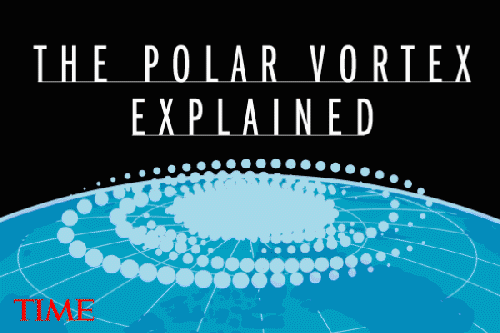When most people think about the jet stream, if they think about it at all, it’s usually in the context of the high-altitude, fast moving wind currents of the northern hemisphere that enable speedy west-to-east long-haul flights. But the polar jet stream also plays a major role in our daily lives: the weaker it gets, the wackier our weather is, from the Texan deep freeze of 2021 to the snow bombs that have pummelled the West Coast over the past two weeks, and the winter storms now heading for the East Coast and Europe. It’s not just cold weather—an unstable jet stream can also lead to severe heat waves, droughts, or excessive amounts of rain. And the polar jet stream appears to be weakening, according to scientists, as a result of Arctic warming caused by climate change.
The jet stream, which circles the northern latitudes of the northern hemisphere in a tight band, works as a barrier, keeping the swirling mass of freezing air over the North Pole—the polar vortex—contained. The bigger the difference in temperatures between Arctic areas and lower latitudes, the faster the jet stream moves. But as the Arctic warms, there is less of a temperature difference, and the jet stream slows down.
It’s kind of like a bicycle: the faster you pedal, the more stable the ride. But slow down too much and your front wheel starts to wobble. Those wobbles, or dips in a slower-moving jet stream, allow the polar vortex to plunge further south. Wobbles in the opposite direction can bring unseasonably warm weather north. They can also block out the low-pressure systems that bring clouds and precipitation, potentially leading to heat waves and drought, like the heat dome that scorched the Pacific Northwest in September 2022.

Read more: ‘Bomb Cyclone’ and Other Weird Weather Words for Our Climate Change Era
“When the jet stream is in a weaker state it is more easily deflected by things like mountain ranges or even blobs of warm ocean water,” atmospheric scientist Jennifer Francis, of the Massachusetts-based Woodwell Climate Research Center, told me last year. Those bigger north-south swings create the low- and high-pressure zones seen on TV weather reports, and the jet stream’s slower speed allows weather patterns to stay in place longer, says Francis. “The jet stream is our weather. So anything that affects the jet stream is going to affect weather patterns.” That means, somewhat counterintuitively, that even with a warming climate, we can still expect colder, more severe storms.
More Must-Reads from TIME
- Inside Elon Musk’s War on Washington
- Meet the 2025 Women of the Year
- The Harsh Truth About Disability Inclusion
- Why Do More Young Adults Have Cancer?
- Colman Domingo Leads With Radical Love
- How to Get Better at Doing Things Alone
- Cecily Strong on Goober the Clown
- Column: The Rise of America’s Broligarchy
Contact us at letters@time.com